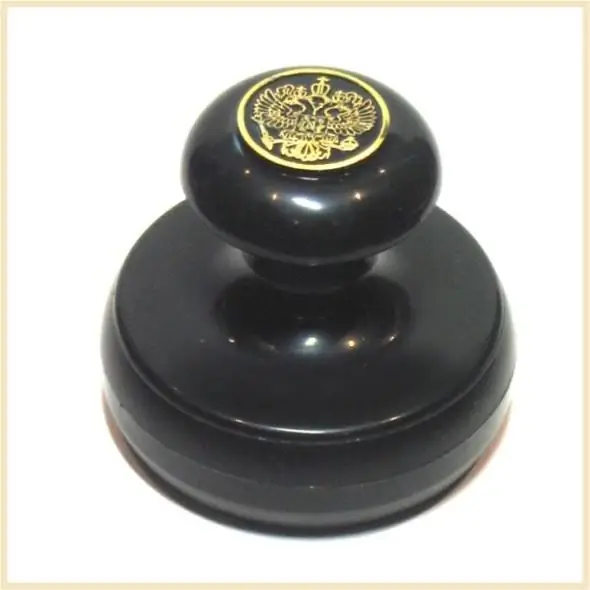"Not valid without a signature", "not valid without a seal." How often do we hear these phrases or read them on forms of documents. And heraldic seals, impressions "for papers" and "personnel department" are put, with names and surnames of doctors in different places of the document and in no particular order. The seal gives legal effect to the document.

Instructions
Step 1
However, there are still no exact rules governing the setting of seals. There is also no indication that all documents must have a seal imprint. For all we know, the seal is put in the place marked with the letters "MP". But there are generally accepted rules that relate to this issue.
Step 2
So, the seal is put at the end of the document, which is signed by an official, for example, a director or head of a department. At the same time, it is desirable that the seal concerns the signature. Thus, the seal, as it were, certifies the signature and confirms that the person who signed the document is in fact an official of this organization, as well as his right to sign documents of this kind.
According to unofficial data, notaries were the first to introduce such a practice.
In addition, it is sometimes required that the seal imprint partially covers the title of the position of an official, but does not touch his signature.
At the same time, some put the seal so that it does not overlap the signature, citing the facilitation of the examination (handwriting and printing). Currently, this rule applies only to the banking sector.
Step 3
What documents should be stamped? Employment contracts, work books, internal acts of the organization, travel certificates, certificates and characteristics, service certificates, presentations and petitions from the place of work, copies of documents, letters and certificates, powers of attorney, staff schedules, letters of guarantee, petitions, contracts, requests from officials.
Step 4
What types of seals are there?
1. Official seal. It has the right to put only state bodies or bodies that are endowed with certain state powers. An example is notary offices. The seal is round.
2. Seals equated to the coat of arms. The print data can be supplied, for example, by commercial companies. The logo of the organization is usually displayed in the center of the seal. Around - the number of the certificate of state registration, TIN. The seal is round.
3. Stamp. Usually contains inscriptions. For example, “Allowed”, “Issued”, “Paid”, “Denied”, “Copy”, etc. The shape is rectangular.
4. Dater. The appearance is not regulated. Each organization decides for itself how it should look and where it should stand. Represents the automatic date stamp.
5. Simple seals of structural units. In the center of a simple seal, the full name of the structural unit, as recorded in the Charter, is indicated. For example, "Human Resources".
6. Facsimile. Represents a copy of the signature of an official. The Civil Code prohibits the use of facsimiles on accounting and personnel records.






